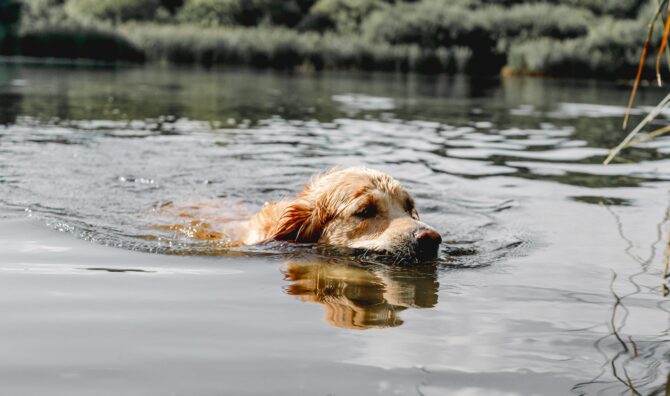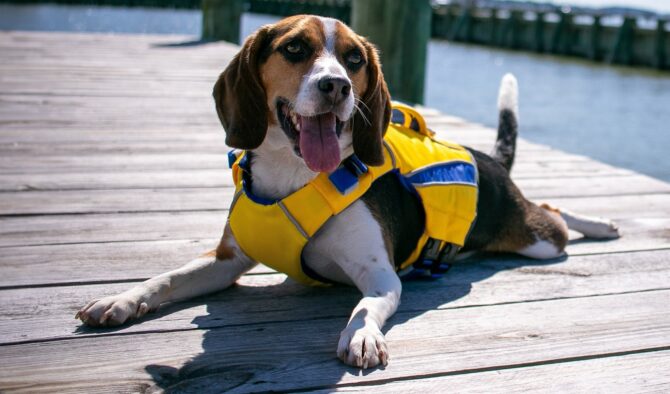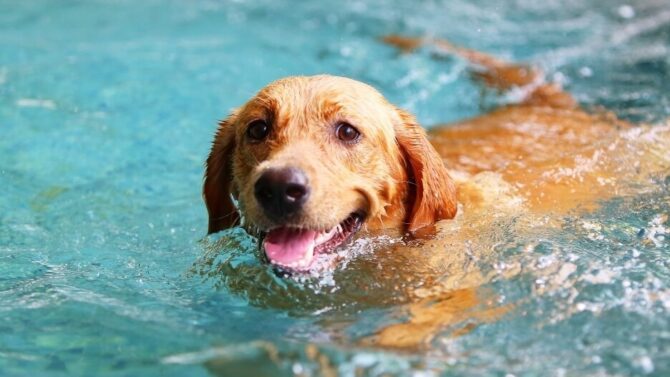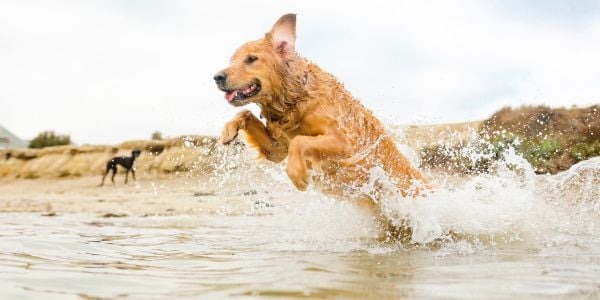Swimming with your dog on a warm day can feel like the ultimate bonding experience. The splashes, wagging tails, and shared joy are unbeatable.
But when it comes to rivers—especially natural, fast-moving ones—there are a few important questions that need answering before you let your pup dive in. Is it really safe? What should you be watching for? And how can you make sure both of you stay out of trouble?
This guide covers everything you need to know about swimming with your dog in rivers—what’s safe, what’s risky, and what you should absolutely never skip.
Key Highlights
- Rivers present unique risks such as currents, waterborne bacteria, and sharp objects.
- Not all dog breeds are natural swimmers; safety gear like dog life jackets is crucial.
- Water temperature, depth, and speed must always be assessed before letting your dog in.
- Supervision is key—never leave your dog unattended near a natural water source.
- Certain wildlife and toxins can pose hidden threats in river areas.
- Always rinse your dog after swimming to avoid skin irritation and ingestion of bacteria.
What Makes River Swimming Different for Dogs?

Unlike pools or calm lakes, rivers are unpredictable. Even if a river looks serene on the surface, strong undercurrents can pose danger, especially to dogs that aren’t experienced swimmers.
Rocks, sticks, and even broken glass are often hidden just beneath the water.
These aren’t small issues—many emergency vet visits during summer are linked to injuries picked up during what was meant to be a fun swim.
Some rivers also change dramatically in depth within just a few steps.
A shallow stretch might suddenly drop, sending your dog into deep water faster than you can react. And while dogs might instinctively paddle, that doesn’t mean they can handle it for long.
How to Tell If It’s Safe for Your Dog
Before you even take your dog near a riverbank, do a bit of scouting. Ask yourself:
- Is the water moving quickly? Fast currents are a red flag.
- Are there people or dogs swimming nearby? If locals avoid it, you probably should too.
- What’s the weather been like? Heavy rain recently? That could mean higher, more dangerous water levels.
Make sure the area allows dog swimming. Some protected environments have rules for a reason—usually to protect both wildlife and pets.
Also, if your pup is brachycephalic (like a French Bulldog), even shallow water can become risky very fast. Their short snouts and compact builds make them prone to fatigue and overheating.
To help dogs like these stay safer and more confident in water, using a proper french bulldog life jacket is not just a smart idea—it can be a lifesaver. These life jackets are specifically designed to support their bodies, allowing them to float easily without working overtime to stay above the surface.
Best Practices for Swimming in Natural Waters

If the river seems safe, here’s what you should keep in mind before letting your dog go in:
Always Do a Temperature Check
Just like people, dogs can suffer from shock if the water is too cold. Dip your hand in and hold it there for a few seconds. If it feels uncomfortably cold to you, it’s not ideal for your dog.
Use a Life Jacket
Even if your dog is an eager swimmer, a dog-specific life jacket adds an extra layer of safety. Look for ones with handles on the back—you never know when you’ll need to scoop your pup out in a hurry.
Stick to the Shoreline
Wading is fun and much safer than full-on swimming in rivers. Dogs often enjoy just paddling around in shallow zones. Keep the deeper water off-limits unless you’re fully confident in the conditions.
Keep a Leash Handy
Never take your dog to a river without a sturdy leash. You may not need to use it the whole time, but if your dog suddenly gets the zoomies or spots a duck, you’ll be glad you have it.
The Hidden Dangers People Overlook

Sometimes it’s not the obvious stuff—like strong currents or slippery rocks—that cause problems. Here are a few sneaky hazards to watch for:
- Algae blooms: Certain types, like blue-green algae, can be toxic to dogs. If the water looks murky, greenish, or has floating scum, steer clear.
- Leptospirosis: This bacterial infection is often found in natural water and can make dogs seriously ill. Vaccination helps, but avoiding contaminated water is best.
- Fishing hooks and lines: Discarded gear can easily injure paws or get swallowed.
- Snakes or sharp debris: Especially near the banks or in shallow water, these can be dangerous and hard to see.
Breed Matters: Not All Dogs Are River-Ready
Some dogs were practically born to swim—like Labradors and Golden Retrievers. But others? Not so much.
Dogs with short legs, dense bodies, or flat faces struggle more in water. That doesn’t mean they can’t enjoy a splash, but it does mean they need more support and closer supervision.
Keep these tips in mind:
- Short-nosed breeds may tire quickly and need more frequent breaks.
- Older dogs or those with joint issues might find it hard to move against even a gentle current.
- Puppies should avoid rivers entirely until they’re more physically developed and trained.
After the Swim: Important Post-River Care

Once your river adventure is done, don’t forget to:
- Rinse your dog with clean water to remove bacteria, debris, and potential irritants.
- Check for cuts or ticks, especially around the paws and ears.
- Dry thoroughly, paying attention to creases and ears to prevent infections.
- Offer water, since dogs can accidentally ingest river water and may feel sick from it.
Also, keep an eye on your dog for the next 24–48 hours. If they seem lethargic, vomit, or have diarrhea, it could be a reaction to something picked up in the water—and a trip to the vet might be in order.
When to Skip River Swimming Altogether
There are definitely days when skipping the river is the best decision. Avoid river swimming if:
- It’s been storming recently.
- Your dog seems off or unwell.
- You notice wildlife behaving unusually (a sign of bad water quality).
- Your dog hasn’t been trained in recall and is likely to run off.
There are safer alternatives: a kiddie pool in the backyard, a dog-friendly beach, or even a calm lake with clearly marked dog zones.
Prioritize Safety, Not Just Fun

Swimming in rivers can be a joyful, enriching activity for both you and your dog—but only when done with care. Taking a few extra precautions, choosing the right gear, and staying alert can make all the difference.
The best water memories aren’t just about fun—they’re about shared moments where everyone comes home safe, tired, and happy.
Let your dog enjoy the splash—but be the calm, watchful presence they need by the shore.






